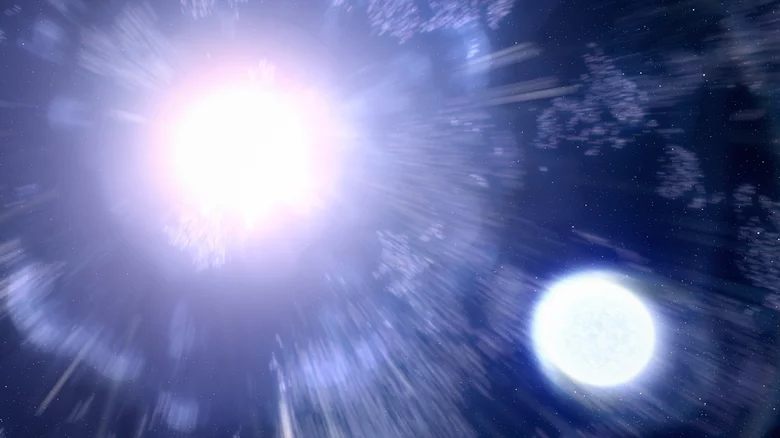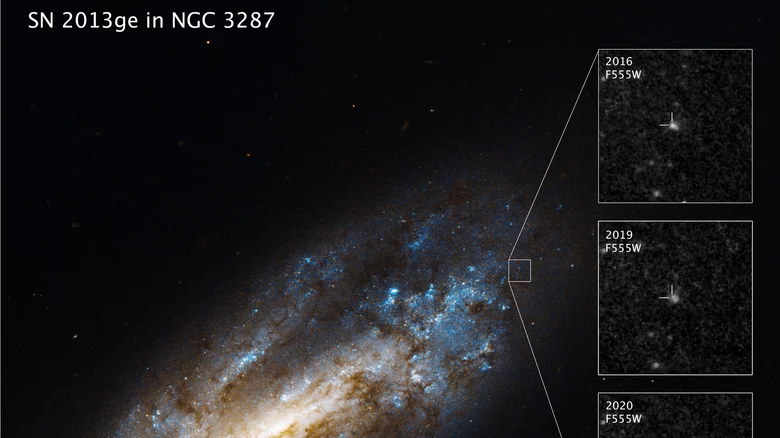When a star approaches the end of its life and runs out of fuel, it detonates in a huge explosion called a supernova. These events are dramatic and destructive; They can destroy nearby stars, and if such an event occurs nearby, it will make a planet like Earth uninhabitable. However, the Hubble Space Telescope has recently been studying a tenacious star that survived after its companion became a supernova. The data collected can help astronomers understand how stars evolved and died**

Researchers are looking at a supernova because they want to know what happens to the outermost layer of the star (composed of hydrogen) in such an event. Sometimes, after a supernova, there is no evidence of hydrogen at all, which makes researchers wonder what happened to it. To answer this question, the team used Hubble to look for examples of these "stripped" supernovae. They found what they were looking for in 2013ge. It used to be a binary system before a star became a supernova and left a companion star after the explosion.
"This is the moment we have been waiting for and finally see evidence of a completely stripped supernova binary system," said the study's lead author, ori Fox of the Space Telescope Science Institute. "Our goal is to move this research field from theory to data processing and understand the real situation of these systems."

When astronomers first observed supernova 2013ge, they saw bright ultraviolet light from the explosion for several years. But after a period of time, the light begins to darken and another ultraviolet light source becomes visible: the companion star. By studying it, researchers can test the theory that the star sucked hydrogen from its companion star before becoming a supernova. This is what happens in theory, but it has never been observed before.
"In recent years, a lot of different evidence tells us that stripped supernovae may have formed in binary systems, but we haven't really seen companion stars yet," said Maria drout of the University of Toronto, another researcher. "Most of the work of studying the cosmic explosion is like Forensic Science - looking for clues and seeing which theories match. Thanks to Hubble, we can see this directly."
Another unusual feature of this supernova is that it shows two peaks in brightness instead of the usual one. The researchers believe that the first peak appeared when the first star exploded, while the second peak appeared when the shock wave hit the companion star and pushed it. Despite being hit by this huge shock wave, the companion star survived.
However, the companion star is likely to eventually become a supernova like its "companion". Then a pair of black holes or neutron stars will appear. Depending on the distance between the two remaining stars, they may surround each other, or one of them may be thrown deep into space.